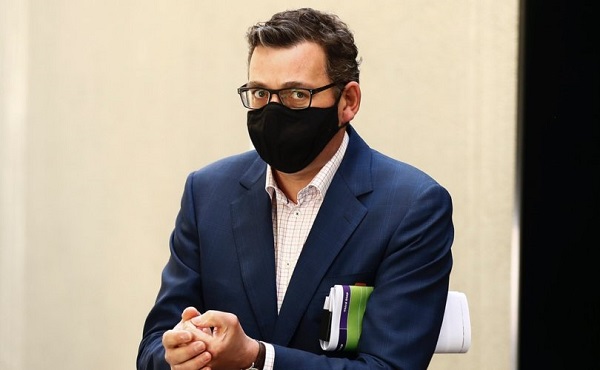Brownstone Institute
The Most Important Meeting in the History of the World That Never Happened

From the Brownstone Institute
BY
There was a brief moment in Spring 2020, just a few days into “15 Days to Slow the Spread,” when we had a chance to change our trajectory. A distinct inflection point where if we had done just one thing differently, and caught the crazy COVID coaster before it got locked in its tracks, things could have turned out very differently over these last three plus years.
In the third week of March a secret emergency meeting was scheduled to take place between President Donald Trump, the COVID Task Force, and eight of the most eminently qualified public health experts in the world. This elite group of scientists was slated to present the highest-level decision-makers in our government with an alternative POV to lock down; a much-needed second opinion on national turtling.
We didn’t know it at the time, but this would have been the most important meeting of the COVID-19 era. But it never occurred.
What happened?
This has been a nagging question ever since July 27, 2020 when BuzzFeed News broke the news in an article by Stephanie M. Lee: “An Elite Group Of Scientists Tried To Warn Trump Against Lockdowns In March.” In her article Ms. Lee framed this aborted meeting as a dodged bullet, and the scientists as unhelpful meddlers, but for many of us the fact that there even was an attempted meeting like this was extremely heartening.
Because for months we had been led to believe that this novel, authoritarian response was unanimous, that “the science was settled” and yet here we find out that some of the most famous scientists in the world didn’t quite agree with “the science.” Not only that, but they had major issues with the process, they questioned the data, and they were extremely concerned about the downstream, long-term effects to our society from locking down. But Lee’s article didn’t even attempt to answer the one big glaring, nagging question left in her article: “Why?”
If you remember back to Late Winter/Early Spring 2020 the entire connected world went from “Hey, no big deal,” to “Hey, what’s going on in Italy?” to “Holy shit, we’re all gonna die!” in a matter of just a few weeks. COVID mania quickly captured us all, and by early March we were suddenly armchair experts on cytokine storms and case counts, and even your aunt Glenda posted that “Flatten the Curve” Washington Postarticle on Facebook and suddenly we found ourselves on March 15, 2020 watching in slack-jawed horror as Trump, Fauci, and Birx stood up there, telling us their bright idea was to shut down the entire country. For just two weeks they said. To protect our hospitals from “the spike” they said. If we didn’t, they said, two million people would surely die.
And who were we to argue? They had a powerpoint presentation with logos and charts, the laughable Imperial College London model, and of course the force of government behind them.
The national reaction was… curious. Some of us, but not nearly enough, were horrified; viscerally and vehemently opposed to this entire concept on scientific, moral and legal grounds. But we were grossly outnumbered. The vast majority of the population was really scared, and poll after poll indicated they were in favor of these unprecedented, draconian measures. Some of our fellow humans even seemed downright giddy at the prospect of hunkering down indefinitely, until it was “safe” to come out; whatever the shifting daily definition of “safe” was, and whatever the ultimate societal cost.
Although lockdown was presented to us that day as a fait accompli, some of us were undeterred. We spoke up to our friends, families, and coworkers and spoke out on social media, writing letters, holding protests, doing whatever we could to to reason, educate, even plead with our local representatives, leaders and opinion-makers not to continue down this novel path. But to no avail. “Shut up,” they said.
We were just normies, after all, and at the time there were very few actual “experts” on our side. Luckily for us, one of those few was John Ioannidis, an immensely respected physician, scientist, statistician, mathematician, Stanford professor, and writer who was renowned for his works in–get this–epidemiology and evidence-based medicine. Ioannidis was the perfect voice to counter the runaway COVID-19 pandemic response narrative.
And speak up he did. On March 17, 2020 Ioannidis published a groundbreaking STAT article “A fiasco in the making? As the coronavirus pandemic takes hold, we are making decisions without reliable data.” He asked aloud what many of us were wondering privately: would this fiat public health response be a “once-in-a-century evidence fiasco?”
In his article Ioannidis pointed out that all the COVID data to date was actually “of very bad quality,” and we were making monumental decisions daily based on dangerously unreliable information. He also pointed out that the chances of dying for those infected (the Infection Fatality Rate) had to be be much lower than the ridiculous 3.4 percent Case Fatality Rate (CFR) publicly announced by the WHO; his working theory being that many more people had been infected without noticing it, or without being tested.
Ioannidis’ rational and well-reasoned POV in STAT ran squarely against the official narrative, and garnered immediate pushback from “the establishment.” Thankfully, John Ioannidis is a rare brave person, so he promptly ignored the narrative police and submitted his case directly to the top: President Donald J. Trump.
In his letter to the White House Ioannidis warned Trump against “shutting down the country for a very long time and jeopardizing so many lives in doing this” and he requested an emergency meeting to provide all the key stakeholders in the Executive Branch a much-needed second opinion, delivered from a “diverse panel of the top experts in the world.”
This was his letter:
“Dr Ioannidis (bio below) is assembling a group of world renowned scientists who can contribute insights to help solve the major challenge of COVID-19, by intensifying efforts to understand the denominator of infected people (much larger than what is documented to-date) and having a science- and data-informed, targeted approach rather than shutting down the country for very long time and jeopardizing so many lives in doing this. The aim is to identify the best way to both save more lives and avoid serious damage to the US economy using the most reliable data, since the infection rate may be off by a very large factor versus the number of currently documented cases. The scientists are willing to come to the White House personally or join by video conference.”
The proposed panel consisted of:
Jeffrey Klausner, MD MPH – Professor of Clinical Population and Public Health Sciences at USC currently (was Professor at UCLA in 2020).
Art Reingold – Professor of Epidemiology in the School of Public Health at Berkeley.
Jay Bhattacharya, MD, PhD – Professor of Medicine at Stanford University, research associate at the National Bureau of Economics Research.
James Fowler, PhD – Professor of Infectious Diseases and Global Public Health at UCSD
Sten H. Vermund, MD, PhD – Dean of the Yale School of Public Health (2017-2022)
David L. Katz, MD, MPH – founder of Yale University’s Yale-Griffin Prevention Research Center.
Michael Levitt, PhD – Nobel Prize Winner, Professor of Structural Biology at Stanford.
Daniel B. Jernigan, MD, MPH – Director of the Influenza Division in the National Center for Immunization and Respiratory Diseases (NCIRD) at CDC.
On amazingly short notice, Ioannidis had managed to assemble a literal COVID dream team. These scientists were the real deal: actual bonafide “experts” in a landscape of cosplayers and clout chasers.
When I asked Ioannidis about his historic effort to have an open dialogue with the White House and COVID Task Force in March 2020 he replied to me by e-mail:
“The effort was to create a team with top scientists in epidemiology, public health, health policy, population sciences, social sciences, social networks, computational modeling, healthcare, economics, and respiratory infections. We wanted to help the leadership and the Task Force. The Task Force had stellar, world-caliber scientists like Fauci, Redfield, and Birx, but their otherwise amazing expertise did not cover specifically these areas.”
To that end, John Ioannidis didn’t just pick names out of a hat, he curated this group for maximum positive impact. This was not only an extremely talented group, it was an extremely diverse group. They didn’t all agree on what the response to COVID should be, either. But in the interest of faithfully representing all possible angles and views, Ioannidis insisted they take part. In fact Reinhold and Vermund were recruited by Ioannidis precisely because they didn’t agree with him on how to handle things, and none of the eight were political actors. Despite insinuations to the contrary.
“I have absolutely no clue what the members of the team voted! And it really does not (should not) matter.”
The idea of an emergency White House meeting like this was especially radical because at that time any discussion to the contrary was considered taboo. But lockdown was the most important public health decision in modern human history: one that would potentially affect the future of the entire planet. So why not take a moment to hash it out, with some of the smartest and most qualified people on the planet, and make sure we were making the correct decision?
As of March 24, 2020 the calendars had been aligned and this landmark meeting seemed to be a “go.”
“Request has gone in officially, waiting to hear…”
Then… nothing.
Radio silence.
Finally, on March 28 Ioannidis emailed the group:
“Re: meeting with the President in D.C. Have kept asking/putting gentle pressure, I think our ideas have infiltrated the White House regardless, I hope to have more news on Monday…”
Although Stephanie M. Lee of Buzzfeed News insinuated this was Ioannidis’ way of claiming victory, when asked about it he was keen to clarify:
“I am self-sarcastic here, as it was apparent that we were NOT being heard and other people in the team were also self-sarcastic in saying that our proposal had hit on a wall and bounced.”
So that the heck happened between March 24 and March 28? How did this historic meeting go from “on” to “Oh, never mind?”
What on earth could’ve nuked it?
Or… who?
“I initially communicated myself with a White House person, there is no need to create trouble for that person by naming, I believe that person made a well-intentioned effort, even if it did not work. I don’t know if the message did reach Trump or not and I have no clue who cancelled the meeting and why it came to naught.”
A benign answer could simply be that “Shit happens.” After all, people cancel meetings all the time, especially Presidents and their handlers in the middle of a political and public health maelstrom.
But the meeting could have also been canceled for a host of other reasons, especially political ones, and there were in fact a few key events that occurred in those key 4 gap days that may have had an impact:
March 24, 2020 Trump murmured his famous “Open by Easter” viral bite in a walking ‘n talking interview with Fox’s Bill Hemmer. Which, interestingly, is often confused with Trump wanting to open “early,” when in fact Easter 2020 landed on April 15: a full 15 days past the promised end of the first official “15 Days.” So in effect Trump was already promising to extend the lockdown:
TRUMP: …I’d love to have an open by Easter. Okay?
HEMMER: Oh, wow. Okay.
TRUMP: I would to have it open by Easter. I will — I will tell you that right now. I would love to have that — it’s such an important day for other reasons, but I’ll make it an important day for this too. I would love to have the country opened up and just raring to go by Easter.
HEMMER: That’s April 12th. So we will watch and see what happens.
TRUMP: Good.
Also on March 24, 2020 India officially declared a national 21-day lockdown, which was longer than our puny #15Days, and their lockdown would affect over 1.3 billion people as opposed to our few hundred million. This was framed as “India takes COVID super-seriously,” of course.
On March 25th, 2020 the US Senate passed the CARES Act, a stonking $2.2 trillion economic “stimulus bill” which promised to go directly to adversely affected individuals, businesses, schools and hospitals and never ever ever be wasted, misappropriated, or brazenly stolen by ne’er-do-wells.
Prince Charles tested positive for COVID-19 on March 25th, 2020 as well. And he died. No, wait, my bad, he experienced mild symptoms and self-isolated with servants at his residence in Scotland.
On March 26, 2020 three pretty big-deal things happened. One, the US Department of Labor reported that 3.3 million people filed for unemployment benefits, making it the highest number of initial jobless claims in American history at the time. It was a big story at the time. But what also happened on March 26, 2020is that the US became “the country with the most confirmed COVID cases,” officially surpassing China and Italy for that coveted top spot.
March 26, 2020 also featured the WHO’s virtual “Extraordinary Leaders’ Summit on COVID-19” where World Health Organization Director-General Tedros announced:
“We are at war with a virus that threatens to tear us apart – if we let it. Almost half a million people have already been infected, and more than 20,000 have lost their lives. The pandemic is accelerating at an exponential rate…Without aggressive action in all countries, millions could die. This is a global crisis that demands a global response…Fight hard. Fight like hell. Fight like your lives depend on it – because they do. The best and only way to protect life, livelihoods and economies is to stop the virus…Many of your countries have imposed drastic social and economic restrictions, shutting schools and businesses, and asking people to stay at home. These measures will take some of the heat out of the epidemic, but they will not extinguish it. We must do more.”
Could any of these happenings have caused the Trump camp to say, “We’re good. Thanks for the offer anyway, nerds?”
Who knows.
But the next explanation is far more interesting, and more conspiratorial: was there someone in or near the White House that put the kibosh on this thing? Did Fauci and/or Birx convince Kushner to tell Meadows to tell Trump to tell his secretary to nix the meeting?
Hmmmm. If only there was a way to find this out.
“Indeed, I would be the first to love to know what happened!”
In the aforementioned BuzzFeed article “An Elite Group Of Scientists Tried To Warn Trump Against Lockdowns In March” author Stephanie Lee presented only a select few “obtained” emails, to make her case.
So I “obtained” the same emails via FOIA to the public universities, and, really, there’s nothing in those emails than a group of mutually-respected peers desperately trying to coordinate and contribute to this burgeoning national disaster; these were all people desperately trying to do the right thing for the country, and the world. They just wanted to help.
For what it’s worth, these emails are an incredible time capsule documenting the events and societal tenor of that important time, and are presented here, in their entirety. Whatever caused this critically important meeting to be canceled, it’s now quite apparent that it would’ve been better had that meeting taken place.
Because even under the most gracious definitions of “lockdown” our public health reaction to COVID was a colossal mistake. A massive abysmal failure, based on any neutral metric. Lockdown failed on stopping the virus, it failed on overall health outcomes, it failed on the economy, it failed on “equity,” it failed our kids and perhaps most tellingly it failed our principles. In the future there will be entire sections of libraries dedicated to the mind-boggling extent of the destruction caused by these panicked, pseudoscientific public-health decisions. Decisions that were forced on us, without even so much as a show vote.
Much less a proper discussion. And that’s what this meeting would have been: a discussion. An opportunity to expose the Leader of the Free World to a different and better set of ideas on how to handle the COVID-19 pandemic. The fact is that, in the third week of March 2020, we were all unceremoniously denied a basic medical, human right: an informed second opinion.
Brownstone Institute
If the President in the White House can’t make changes, who’s in charge?

From the Brownstone Institute
By
Who Controls the Administrative State?
President Trump on March 20, 2025, ordered the following: “The Secretary of Education shall, to the maximum extent appropriate and permitted by law, take all necessary steps to facilitate the closure of the Department of Education.”
That is interesting language: to “take all necessary steps to facilitate the closure” is not the same as closing it. And what is “permitted by law” is precisely what is in dispute.
It is meant to feel like abolition, and the media reported it as such, but it is not even close. This is not Trump’s fault. The supposed authoritarian has his hands tied in many directions, even over agencies he supposedly controls, the actions of which he must ultimately bear responsibility.
The Department of Education is an executive agency, created by Congress in 1979. Trump wants it gone forever. So do his voters. Can he do that? No but can he destaff the place and scatter its functions? No one knows for sure. Who decides? Presumably the highest court, eventually.
How this is decided – whether the president is actually in charge or really just a symbolic figure like the King of Sweden – affects not just this one destructive agency but hundreds more. Indeed, the fate of the whole of freedom and functioning of constitutional republics may depend on the answer.
All burning questions of politics today turn on who or what is in charge of the administrative state. No one knows the answer and this is for a reason. The main functioning of the modern state falls to a beast that does not exist in the Constitution.
The public mind has never had great love for bureaucracies. Consistent with Max Weber’s worry, they have put society in an impenetrable “iron cage” built of bloodless rationalism, needling edicts, corporatist corruption, and never-ending empire-building checked by neither budgetary restraint nor plebiscite.
Today’s full consciousness of the authority and ubiquity of the administrative state is rather new. The term itself is a mouthful and doesn’t come close to describing the breadth and depth of the problem, including its root systems and retail branches. The new awareness is that neither the people nor their elected representatives are really in charge of the regime under which we live, which betrays the whole political promise of the Enlightenment.
This dawning awareness is probably 100 years late. The machinery of what is popularly known as the “deep state” – I’ve argued there are deep, middle, and shallow layers – has been growing in the US since the inception of the civil service in 1883 and thoroughly entrenched over two world wars and countless crises at home and abroad.
The edifice of compulsion and control is indescribably huge. No one can agree precisely on how many agencies there are or how many people work for them, much less how many institutions and individuals work on contract for them, either directly or indirectly. And that is just the public face; the subterranean branch is far more elusive.
The revolt against them all came with the Covid controls, when everyone was surrounded on all sides by forces outside our purview and about which the politicians knew not much at all. Then those same institutional forces appear to be involved in overturning the rule of a very popular politician whom they tried to stop from gaining a second term.
The combination of this series of outrages – what Jefferson in his Declaration called “a long train of abuses and usurpations, pursuing invariably the same Object” – has led to a torrent of awareness. This has translated into political action.
A distinguishing mark of Trump’s second term has been an optically concerted effort, at least initially, to take control of and then curb administrative state power, more so than any executive in living memory. At every step in these efforts, there has been some barrier, even many on all sides.
There are at least 100 legal challenges making their way through courts. District judges are striking down Trump’s ability to fire workers, redirect funding, curb responsibilities, and otherwise change the way they do business.
Even the signature early achievement of DOGE – the shuttering of USAID – has been stopped by a judge with an attempt to reverse it. A judge has even dared tell the Trump administration who it can and cannot hire at USAID.
Not a day goes by when the New York Times does not manufacture some maudlin defense of the put-upon minions of the tax-funded managerial class. In this worldview, the agencies are always right, whereas any elected or appointed person seeking to rein them in or terminate them is attacking the public interest.
After all, as it turns out, legacy media and the administrative state have worked together for at least a century to cobble together what was conventionally called “the news.” Where would the NYT or the whole legacy media otherwise be?
So ferocious has been the pushback against even the paltry successes and often cosmetic reforms of MAGA/MAHA/DOGE that vigilantes have engaged in terrorism against Teslas and their owners. Not even returning astronauts from being “lost in space” has redeemed Elon Musk from the wrath of the ruling class. Hating him and his companies is the “new thing” for NPCs, on a long list that began with masks, shots, supporting Ukraine, and surgical rights for gender dysphoria.
What is really at stake, more so than any issue in American life (and this applies to states around the world) – far more than any ideological battles over left and right, red and blue, or race and class – is the status, power, and security of the administrative state itself and all its works.
We claim to support democracy yet all the while, empires of command-and-control have arisen among us. The victims have only one mechanism available to fight back: the vote. Can that work? We do not yet know. This question will likely be decided by the highest court.
All of which is awkward. It is impossible to get around this US government organizational chart. All but a handful of agencies live under the category of the executive branch. Article 2, Section 1, says: “The executive Power shall be vested in a President of the United States of America.”

Does the president control the whole of the executive branch in a meaningful way? One would think so. It’s impossible to understand how it could be otherwise. The chief executive is…the chief executive. He is held responsible for what these agencies do – we certainly blasted away at the Trump administration in the first term for everything that happened under his watch. In that case, and if the buck really does stop at the Oval Office desk, the president must have some modicum of control beyond the ability to tag a marionette to get the best parking spot at the agency.
What is the alternative to presidential oversight and management of the agencies listed in this branch of government? They run themselves? That claim means nothing in practice.
For an agency to be deemed “independent” turns out to mean codependency with the industries regulated, subsidized, penalized, or otherwise impacted by its operations. HUD does housing development, FDA does pharmaceuticals, DOA does farming, DOL does unions, DOE does oil and turbines, DOD does tanks and bombs, FAA does airlines, and so on It goes forever.
That’s what “independence” means in practice: total acquiescence to industrial cartels, trade groups, and behind-the-scenes systems of payola, blackmail, and graft, while the powerless among the people live with the results. This much we have learned and cannot unlearn.
That is precisely the problem that cries out for a solution. The solution of elections seems reasonable only if the people we elected actually have the authority over the thing they seek to reform.
There are criticisms of the idea of executive control of executive agencies, which is really nothing other than the system the Founders established.
First, conceding more power to the president raises fears that he will behave like a dictator, a fear that is legitimate. Partisan supporters of Trump won’t be happy when the precedent is cited to reverse Trump’s political priorities and the agencies turn on red-state voters in revenge.
That problem is solved by dismantling agency power itself, which, interestingly, is mostly what Trump’s executive orders have sought to achieve and which the courts and media have worked to stop.
Second, one worries about the return of the “spoils system,” the supposedly corrupt system by which the president hands out favors to friends in the form of emoluments, a practice the establishment of the civil service was supposed to stop.
In reality, the new system of the early 20th century fixed nothing but only added another layer, a permanent ruling class to participate more fully in a new type of spoils system that operated now under the cloak of science and efficiency.
Honestly, can we really compare the petty thievery of Tammany Hall to the global depredations of USAID?
Third, it is said that presidential control of agencies threatens to erode checks and balances. The obvious response is the organizational chart above. That happened long ago as Congress created and funded agency after agency from the Wilson to the Biden administration, all under executive control.
Congress perhaps wanted the administrative state to be an unannounced and unaccountable fourth branch, but nothing in the founding documents created or imagined such a thing.
If you are worried about being dominated and destroyed by a ravenous beast, the best approach is not to adopt one, feed it to adulthood, train it to attack and eat people, and then unleash it.
The Covid years taught us to fear the power of the agencies and those who control them not just nationally but globally. The question now is two-fold: what can be done about it and how to get from here to there?
Trump’s executive order on the Department of Education illustrates the point precisely. His administration is so uncertain of what it does and can control, even of agencies that are wholly executive agencies, listed clearly under the heading of executive agencies, that it has to dodge and weave practical and legal barriers and land mines, even in its own supposed executive pronouncements, even to urge what might amount to be minor reforms.
Whoever is in charge of such a system, it is clearly not the people.
Brownstone Institute
The New Enthusiasm for Slaughter
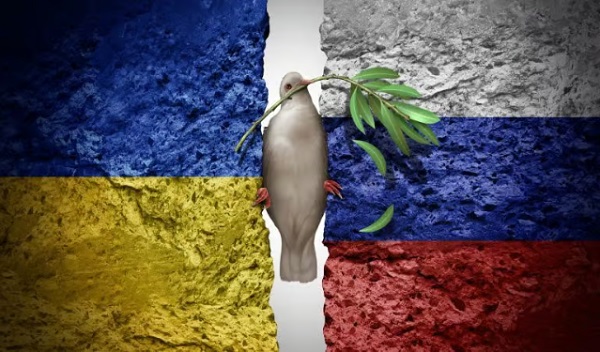
From the Brownstone Institute
By
What War Means
My mother once told me how my father still woke up screaming in the night years after I was born, decades after the Second World War (WWII) ended. I had not known – probably like most children of those who fought. For him, it was visions of his friends going down in burning aircraft – other bombers of his squadron off north Australia – and to be helpless, watching, as they burnt and fell. Few born after that war could really appreciate what their fathers, and mothers, went through.
Early in the movie Saving Private Ryan, there is an extended D-Day scene of the front doors of the landing craft opening on the Normandy beaches, and all those inside being torn apart by bullets. It happens to one landing craft after another. Bankers, teachers, students, and farmers being ripped in pieces and their guts spilling out whilst they, still alive, call for help that cannot come. That is what happens when a machine gun opens up through the open door of a landing craft, or an armored personnel carrier, of a group sent to secure a tree line.
It is what a lot of politicians are calling for now.
People with shares in the arms industry become a little richer every time one of those shells is fired and has to be replaced. They gain financially, and often politically, from bodies being ripped open. This is what we call war. It is increasingly popular as a political strategy, though generally for others and the children of others.
Of course, the effects of war go beyond the dismembering and lonely death of many of those fighting. Massacres of civilians and rape of women can become common, as brutality enables humans to be seen as unwanted objects. If all this sounds abstract, apply it to your loved ones and think what that would mean.
I believe there can be just wars, and this is not a discussion about the evil of war, or who is right or wrong in current wars. Just a recognition that war is something worth avoiding, despite its apparent popularity amongst many leaders and our media.
The EU Reverses Its Focus
When the Brexit vote determined that Britain would leave the European Union (EU), I, like many, despaired. We should learn from history, and the EU’s existence had coincided with the longest period of peace between Western European States in well over 2,000 years.
Leaving the EU seemed to be risking this success. Surely, it is better to work together, to talk and cooperate with old enemies, in a constructive way? The media, and the political left, center, and much of the right seemed at that time, all of nine years ago, to agree. Or so the story went.
We now face a new reality as the EU leadership scrambles to justify continuing a war. Not only continuing, but they had been staunchly refusing to even countenance discussion on ending the killing. It has taken a new regime from across the ocean, a subject of European mockery, to do that.
In Europe, and in parts of American politics, something is going on that is very different from the question of whether current wars are just or unjust. It is an apparent belief that advocacy for continued war is virtuous. Talking to leaders of an opposing country in a war that is killing Europeans by the tens of thousands has been seen as traitorous. Those proposing to view the issues from both sides are somehow “far right.”
The EU, once intended as an instrument to end war, now has a European rearmament strategy. The irony seems lost on both its leaders and its media. Arguments such as “peace through strength” are pathetic when accompanied by censorship, propaganda, and a refusal to talk.
As US Vice-President JD Vance recently asked European leaders, what values are they actually defending?
Europe’s Need for Outside Help
A lack of experience of war does not seem sufficient to explain the current enthusiasm to continue them. Architects of WWII in Europe had certainly experienced the carnage of the First World War. Apart from the financial incentives that human slaughter can bring, there are also political ideologies that enable the mass death of others to be turned into an abstract and even positive idea.
Those dying must be seen to be from a different class, of different intelligence, or otherwise justifiable fodder to feed the cause of the Rules-Based Order or whatever other slogan can distinguish an ‘us’ from a ‘them’…While the current incarnation seems more of a class thing than a geographical or nationalistic one, European history is ripe with variations of both.
Europe appears to be back where it used to be, the aristocracy burning the serfs when not visiting each other’s clubs. Shallow thinking has the day, and the media have adapted themselves accordingly. Democracy means ensuring that only the right people get into power.
Dismembered European corpses and terrorized children are just part of maintaining this ideological purity. War is acceptable once more. Let’s hope such leaders and ideologies can be sidelined by those beyond Europe who are willing to give peace a chance.
There is no virtue in the promotion of mass death. Europe, with its leadership, will benefit from outside help and basic education. It would benefit even further from leadership that values the lives of its people.
-

 Daily Caller2 days ago
Daily Caller2 days agoMisguided Climate Policies Create ‘Real Energy Emergency’ And Permit China To Dominate US
-
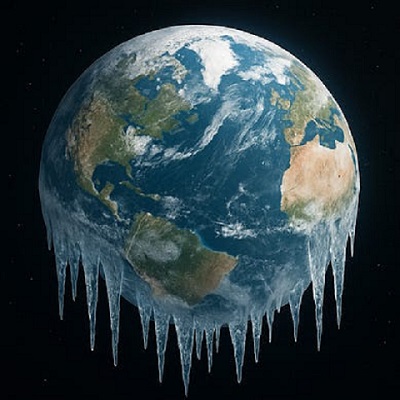
 International2 days ago
International2 days agoIce Surprises – Arctic and Antarctic Ice Sheets Are Stabilizing and Growing
-

 Alberta2 days ago
Alberta2 days agoEnergy projects occupy less than three per cent of Alberta’s oil sands region, report says
-
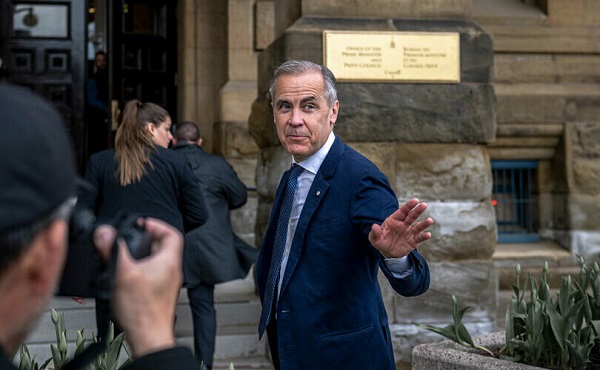
 Energy2 days ago
Energy2 days agoCarney’s energy superpower rhetoric falls flat without policy certainty
-

 Energy2 days ago
Energy2 days agoOil tankers in Vancouver are loading plenty, but they can load even more
-

 2025 Federal Election1 day ago
2025 Federal Election1 day agoGroup that added dozens of names to ballot in Poilievre’s riding plans to do it again
-

 Alberta2 days ago
Alberta2 days agoCharges laid in record cocaine seizure
-
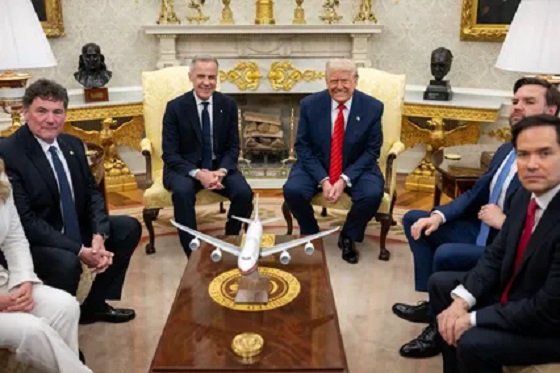
 conflict2 days ago
conflict2 days agoWATCH: U.S. ending bombing campaign on Yemeni militant group







